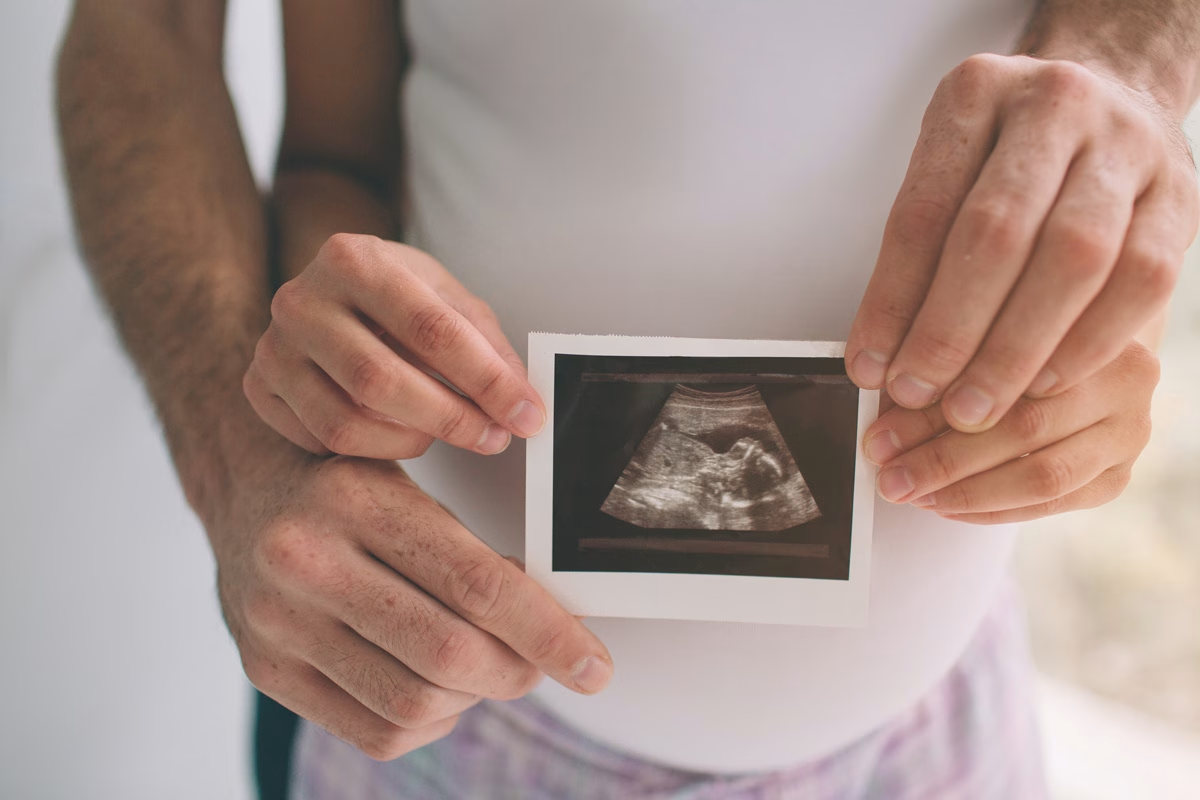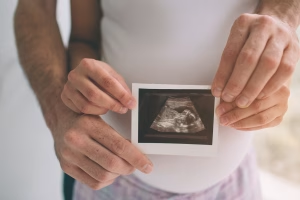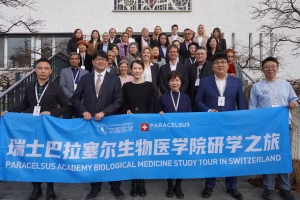To introduce the topic of fertility from the perspective of biological medicine, let me begin with a story from my early years as a student: Our plant biology professor asked the class a “simple” question: What is the purpose of “sex”? Now, as many of you readers might guess, the class became filled with murmurs, snickering and a few vocal “blurps”. But then the question was eventually answered: simply to maintain the existence of the species by propelling the genetic material into the future.
As many of us know, all mammals undergo some form of genetic transfer to give rise to progeny. This has been the case since our early species records, approximately 2 million years ago, in reference to Homo erectus.
However, there is something more that is essential to the survival and evolution of our species: the passing on of knowledge. Just as our parents navigated both good and difficult times, ensuring the safety and resources needed to raise children, we, in turn, carry forward that responsibility. For those who choose to become parents, this includes not only care and protection, but also the transference of knowledge or wisdom.
In the spirit of Biological Medicine, which emphasizes empowering individuals with knowledge to support their own health, this newsletter offers insights into how fertility can be supported through a Biological Medicine approach. We’ll explore four foundational aspects: Embryology, Pathology, Toxicity, and Timing.
Embryology: Foundations of New Life
There are three germ layers, or sheaths, that form very early on after fertilization: Endoderm, Mesoderm and Ectoderm. Regarding the reproductive system, the Mesoderm layer, specifically, the intermediate mesoderm (1), begins to develop in the third week after fertilization. This cellular area further condenses into what is later known as the urogenital ridge, which specifically gives rise to the male testes and female ovaries (1).
For the sake of not becoming too technical, we’ll skip some steps to objectify something important:
At 5 months after fertilization, a female embryo has approximately 6 million eggs in the ovaries, and at birth, this number is reduced to 1-2 million (1). A male offspring has ZERO sperm in the testes! (1). (1). Actually, sperm production doesn’t begin until puberty. To remain with this theme of passing genetic material onto the next offspring, a female will carry all potential, albeit viable, eggs into her forties. There is no regeneration, renewal or recovery system for the eggs, rather, it is what it is. Therefore, it is important to note that various diseases and/or toxicity can demonstrably reduce egg cell count, and importantly, alter egg DNA.
Before we move on to the next topic, Pathology, let’s briefly pause to consider an important biological reality that offers a broader view of the challenges fertility faces. Understanding the natural decline in egg quantity over time provides essential context.
Egg Reserve Over Time – Key Fertility Insight
- At birth: ~1 to 2 million eggs
- At puberty: ~500,000 eggs
- By age 15 (reproductive maturity): ~300,000 eggs
- Each month, thousands of eggs are lost naturally, even without ovulation
These numbers illustrate the natural progression of egg depletion, a central aspect in fertility awareness and planning (2,3).
Pathology: Understanding Barriers to Conception
As with all humans, there are always imperfections, with some rendering both men and women infertile.
Infertility is defined as an inability to become pregnant during 12 months of practicing unprotected sexual intercourse (4).
The potential contributors for women are (4):
- Type II Diabetes
- Polycystic Ovarian Syndrome (PCOS)
- Endometriosis
- Thyroid dysfunction (both hypo. & hyperthyroidism)
- Congenital Uterine Abnormality
- Toxicity from plastics, herbicides and pesticides, as well as metals
- Elevated Natural Killer Cell-56 (NK-56) (5)
The concerns for men are:
- Varicocele: is a swelling of the veins in the scrotum, which leads to a poor blood drainage away from the testes. This leads to an overheating of the testes, which both damages and destroys sperm. This is the most common cause of infertility in men and is reversible via surgery.
- Chronic inflammation of the testes from diseases such as Gonorrhea or HIV.
- Retrograde ejaculation: when sperm enters the bladder instead of exiting the tip of the penis. This is usually seen in cases of diabetic autonomic neuropathy, nerve damage from excessive blood sugar.
- Toxicity: plastics, herbicides, pesticides, and metals such as cadmium and lead can all reduce sperm count, morphology and motility (6).
- Autoimmune disease, such as Crohn´s, Systemic Lupus Erythematosus (SLE), Rheumatoid arthritis and Multiple Sclerosis (6).
There are more pathologies that potentially could disrupt both egg and sperm, but and in essence, the healthier the potential parents, will increase the chance of fecundity.
Toxicity: Hidden Influences on Reproductive HealthToxizität: Verborgene Einflüsse auf die reproduktive Gesundheit
Though it was mentioned within the list above regarding toxicity being a potential contributor to infertility, this topic alone needs to be expanded upon.
There was an interesting study done in November 2022 titled “Temporal Trends in Sperm Count: a systematic review and meta-regression analysis of samples collected globally in the 20th and 21st centuries” (7). A very highly researched, statistical examination of sperm count, and concluded the following:
“Sperm production has decreased by 50% over the last 50 years (sampling collected from 1973-2019). However, and since 2000, the rate of decline has increased compared to preceding years” (7).
The article postulated that microplastics are the main cause of this measured decline in sperm. Research supports this postulation, and in fact, the evidence is quite overwhelming (8).
What are microplastics? According to the National Oceanic and Atmospheric Administration, microplastics are less than 5mm in length and come from degraded plastics. There is another form, microbeads, which are smaller and are formed in skin exfoliants, detergents and toothpaste. These microbeads are made of polyethylene (PE) plastic.
The unfortunate side of microplastics (MPs) is that we can´t see, smell or taste them. The normal evolutionary senses that help protect us from harm are rendered ineffective in this regard. Ergo, these materials simply accumulate in areas of our body, for example, in the ovaries of women and the testes in men.
Multiple studies have demonstrated the harmful effects of microplastic exposure on reproductive health. One study conducted across several sites in China (8) found that microplastics were associated with reduced semen quality in men. In rodent models, microplastic exposure has been shown to disrupt sperm DNA integrity, lower overall sperm count, and function as a general endocrine disruptor (9).
The reason microplastics are endocrine disruptors is that they act as an estrogen agonist (estrogen-mimetic). Because all cells have receptors for both testosterone and estrogen, innately, the physiology of all mammals is finely balanced between the two hormones. Exogenous sources of hormones, especially estrogen in males, will shift the balance between estrogen and testosterone, minimizing testosterone´s biochemical effect on the testes for spermatogenesis.
Hence, if we couple this with exogenous sources of estrogen from foods, perfumes (detergents, soap, car polishing products, etc.), then the cumulative effect on a male´s endocrine system is impacted.
And for women?
For women, excessive estrogen downregulates the signal to the hypothalamus to stimulate the follicle (the fluid-filled sac around the egg) via Follicle Stimulating Hormone (FSH). The follicles roll is to send a feedback signal to the hypothalamus that it has been stimulated and to downregulate FSH release. However, when excessively sourced exogenous estrogen is sending this signal, then the follicle doesn´t ripen under FSH, and either anovulation or infrequent ovulation can occur.
Other sources of toxicity can plague fertility in men and women, such as:
Cigarette smoke
There is no health benefit from smoking, including fertility:
- Smoking can reduce fertility by reducing hormone estradiol (female hormone necessary to stimulate ovulation, the menstrual cycle and development of the egg follicle) (10).
- For men smoking reduces total sperm count, morphology and motility (11, 12).
Marijuana
Research done in 2010 showed that there are cannabinoid receptors on sperm (13,14,15).
Therefore, since no receptor is created simply for “cosmetic” reasons, it turns out that these receptors have a regulatory role. Research shows that activation of these receptors by cannabis use leads to a decrease in sperm motility, which directly reduces fertility.
While cannabinoids are also found in foods like cinnamon, black pepper, and cloves, their concentrations are far lower than those encountered with regular recreational or medicinal cannabis use. Therefore, the greater and more frequent the cannabis exposure, the more significant the negative impact on sperm motility.
Timing: Aligning Biology with Opportunity
While pathology and toxicity can negatively affect fertility in both men and women, timing – or the lack of it – is a critical yet often underestimated influence on reproductive success (16). To help clarify how timing impacts fertility, we turn to insights from a podcast interview with Dr. Natalie Crawford, MD, a fertility specialist (16).
Dr. Crawford shares several key biological facts that underscore the importance of precise timing in both female and male fertility:
Female Fertility & Egg Reserve Over TimeEach month during a woman’s fertile years, multiple eggs begin the maturation process, but only one is selected to fully ripen and ovulate. The number of eggs that start this process declines with age:
- Age 30: ~20 eggs begin maturation; 1 is ovulated, the rest undergo atresia (cell death)
- Age 35: ~14–15 eggs
- Age 40: ~8–10 eggs
- Age 44: ~3–4 eggs
- Menopause: No viable eggs remain.
Additionally, a woman’s most fertile window is the five days before ovulation and the day of ovulation itself.
Male Fertility & Sperm Dynamics
- Men produce approximately 1,500 sperm per second, totaling 200–300 million per day.
- Sperm require about 90 days to fully mature (17).
- Optimal sperm quality is achieved 1–3 days after the most recent ejaculation.
- After 7 days of abstinence, sperm motility declines and DNA damage may increase.
- During intercourse, sperm can reach the cervix in 2 minutes and the fallopian tubes in 5 minutes.
- Sperm can remain viable in the fallopian tube for up to 5 days, aligning with the female fertility window.
As a woman ages, both partners need to become more intentional: she must be aware of her ovulation timing, and he must consider his sperm quality and quantity. When both individuals are healthy and in their 20s, which aligns with a woman’s most fertile years, innate biological conditions are typically optimal for conception.
However, once a woman reaches her early 30s, it becomes increasingly important to evaluate family planning goals If parenthood is desired, the couple should begin to consider both timing and family size, as fertility potential gradually declines with age for both men and women.

Biological Medicine Interventions
As a reader of this newsletter, you’re likely well accustomed to discovering that we at Paracelsus Clinic almost always have something up our “medical sleeve”. When addressing infertility, the most immediate and obvious strategy is the elimination of toxins.
As part of pre-pregnancy evaluation, we recommend that women undergo testing for toxic metals, plastics, herbicides, and pesticides. This approach not only supports fertility but also aims to minimize the transfer of harmful substances across the placenta during pregnancy. When it comes to microplastics, the tiny plastic particles found increasingly in our food, water, and environment, the question becomes: how should we deal with them? These compounds are fat-soluble and tend to accumulate in the body’s adipose tissue. To support their elimination, the following treatment strategies may be considered:
- Whole-body hyperthermia:
By increasing vasodilation in all organs and throughout all tissues, this treatment is a fantastic way to mobilize toxins. - When mobilized, microplastics, because they are fat soluble, are transported through the lymphatic system and eventually processed by the liver. Therefore, all treatments that stimulate lymphatic flow such as lymphatic drainage, the Schöndorf method, oil pulling through the oral cavity, and dry skin brushing will help move these materials toward the liver for elimination.
- To support our liver´s metabolic activities, we offer not only herbal products to stimulate the liver such as Taraxacum and Absinthium, but as well neural therapy along the liver dermatome (vertebral body T9 and T10), a liver detoxification week, Indiba (local hyperthermia over the liver), warm compress over the liver with ginger oil, etc.
- As long as a person is having one bowel movement 1-2 times per day, then the elimination process via the colon will be effective. Should this not be the case, then the inclusion of either enemas or colon hydrotherapy could be beneficial.
In regards to pathology, this must always be treated based on the individual, i.e. case-by-case. However, and in general, Polycystic ovarian syndrome is treated via long-term detoxification, nutrition modification, hormone modification and neural therapy.
In regards to Endometriosis, this is considered an autoimmune disease. Hence, and in Biological Medicine, detoxification, microbiome remapping, assessing immune cytokines and re-establishing a balance in cytokine expression, are all methods we include to help her.
Regarding men, the obvious is lifestyle education. In the case where smoking, excessive alcohol use and/or marijuana is used, then constitutional homeopathy to help re-balance the meridians, detoxification of cadmium (the main source of it is actually from tobacco use), nutritional support and hormone testing we’ve deemed as necessary in their treatment.
For both sexes, stress is always a component that needs to be assessed. The pressure builds on both parties as infertility remains untreated. Most patients explore artificial ways of becoming a parent, such as IVF (invitro fertilization (IVF)), uterine insemination and egg or sperm donation. All three options are costly and may lead to frustration if the intended outcome is not met.
Fortunately, at Paracelsus Clinic, we offer a range of treatment options to help address potential fertility challenges in both men and women. But fertility care isn’t only for those already facing difficulties. Planning ahead, even in the absence of known issues, can make a meaningful difference.
Emerging research in epigenetics shows that the health of both parents prior to conception can influence the genetic expression of future generations.
In other words, the healthier you are, the greater the potential for your child to inherit a strong foundation for lifelong well-being (18).
Please feel free to contact us at Paracelsus Clinic to begin your journey, even if you’re simply planning ahead.As the saying goes, “beauty comes from within”. We believe the same holds true for fertility. Let us help you become the healthiest version of yourself—before becoming a mom or dad.
With warm wishes,
Eric Kimbles, ND
Save this article as a PDF for later. Click here for the PDF version!
References:
1. Gilbert SF. Developmental Biology. 6th edition. Sunderland (MA): Sinauer Associates; 2000. Available from: https://www.ncbi.nlm.nih.gov/books/NBK9983/
2. Rebecca F. It Starts with the Egg: How the Science of Egg Quality Can Help You Get Pregnant Naturally, Prevent Miscarriage, and Improve Your Odds in IVF. 3rd edition. Franklin Fox Publishing, New York; 2014.
3. Beating your Biological Clock, from Dr. Sherman Silber
4. Practice Committee of the American Society for Reproductive Medicine. Definitions of infertility and recurrent pregnancy loss: a committee opinion. Fertil Steril. 2013 Jan;99(1):63.
5. Mardanian F, Kazeroonizadeh M, Rashidi B. Evaluation of CD56(dim) and CD56(bright) natural killer cells in peripheral blood of women with IVF failures. Iran J Reprod Med. 2015 Sep;13(9):577-82.
6. Leslie SW, Soon-Sutton TL, Khan MAB. Male Infertility. 2024 Feb 25. In: StatPearls [Internet]. Treasure Island (FL): StatPearls Publishing; 2025 Jan–. PMID: 32965929.
7. Levine H et al. Temporal trends in sperm count: a systematic review and meta-regression analysis of samples collected globally in the 20th and 21st centuries. Hum Reprod Update. 2023 Mar 1; 29(2):157-176.
8. Zhang C et al. Association of mixed exposure to microplastics with sperm dysfunction: a multi-site study in China. EBioMedicine. 2024 Oct; 108:105369.
9. Zhang C et al. Microplastics May Be a Significant Cause of Male Infertility. Am J Mens Health. 2022 May-Jun; 16(3):15579883221096549.
10. Van Voorhis BJ et al. The effects of smoking on ovarian function and fertility during assisted reproduction cycles. Obstet Gynecol. 1996 Nov;88(5):785-91.
11. Kovac JR, Khanna A, Lipshultz LI. The effects of cigarette smoking on male fertility. Postgrad Med. 2015 Apr;127(3):338-41.
12. Harlev A et al. Smoking and Male Infertility: An Evidence-Based Review. World J Mens Health. 2015 Dec;33(3):143-60.
13. Aquila S, Guido C, Santoro A et al. Human sperm anatomy: ultrastructural localization of the cannabinoidl receptor and a potential role of anandamide in sperm survival and acrosome reaction. Anat Rec (Hoboken) 2010; 293: 298.
14. Agirregoitia E, Carracedo A, Subiran N et al. The CB(2) cannabinoid receptor regulates human sperm cell motility. Fertil Steril 2010; 93: 1378.
15. Agirregoitia E et al. The CB(2) cannabinoid receptor regulates human sperm cell motility. Fertil Steril. 2010 Mar 15;93(5):1378-87.
16. Podcast: Female Hormone Health, Fertility & Vitality with Dr. Natalie Crawford: https://youtu.be/EhlIkzJwPlk?si=cN2j1NE2_AAhhGET
17. Neto FT et al. Spermatogenesis in humans and its affecting factors. Semin Cell Dev Biol. 2016 Nov;59:10-26.
18. Skinner MK. Environmental epigenetics and a unified theory of the molecular aspects of evolution. Epigenetics. 2015Environmental epigenetics and a unified theory of the molecular aspects of evolution. Epigenetics. 2015
Additional References about microplastics and effect on reproductive physiology:
• Hu CJ et al. Microplastic presence in dog and human testis and its potential association with sperm count and weights of testis and epididymis. Toxicol Sci. 2024 Aug 1;200(2):235-240.
• Zhang C et al. Microplastics May Be a Significant Cause of Male Infertility. Am J Mens Health. 2022 May-Jun;16(3):15579883221096549.
• Zhao Q et al. Detection and characterization of microplastics in the human testis and semen. Sci Total Environ. 2023 Jun 15;877:162713.
• D’Angelo S, Meccariello R. Microplastics: A Threat for Male Fertility. Int J Environ Res Public Health. 2021 Mar 1;18(5):2392.




